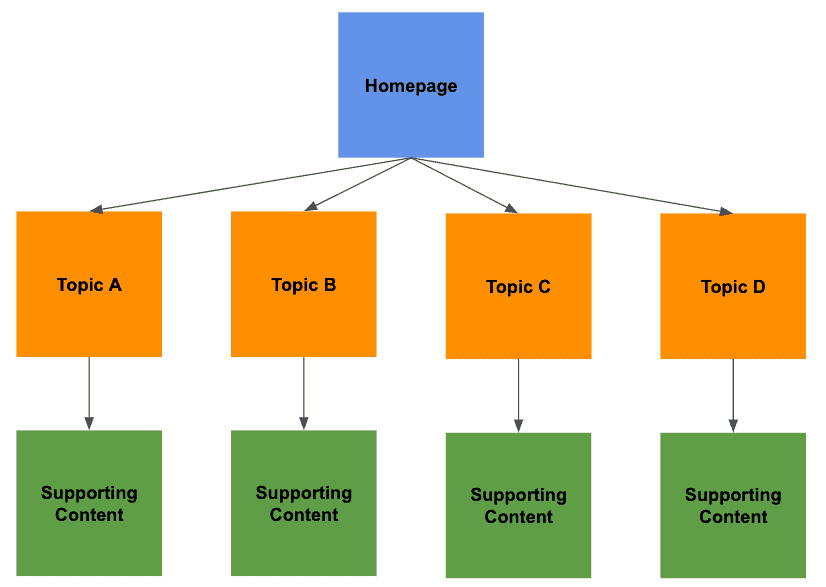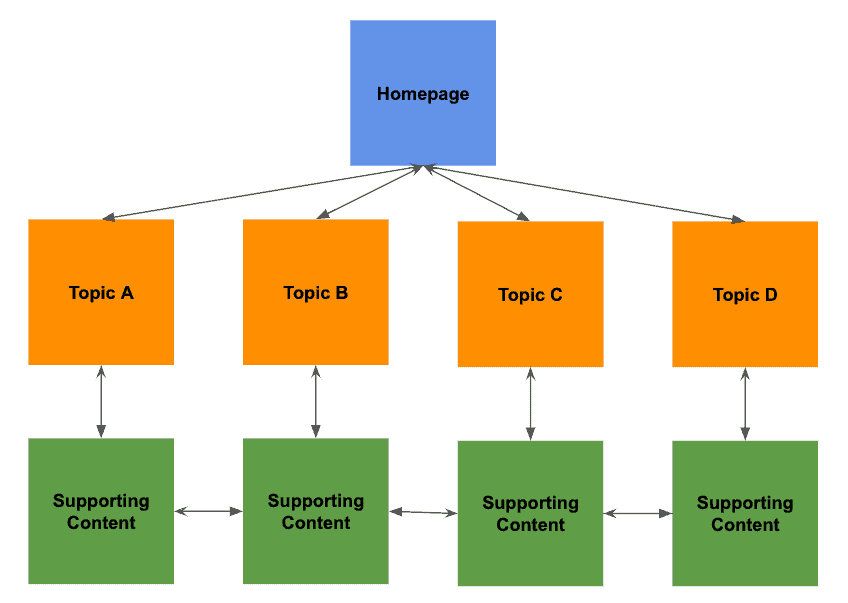When designing a new website it is important to consider the structure of the site to aid organic search performance.
With every passing year, I find it closer to the top of my list of important things to work on when working with a site.
What Is Site Structure?
At its core, site structure is simply the act of organizing a website.
The goal of this organization is to create a site that is easily navigatable by users while simultaneously allowing search engines to crawl the site easily.
One of the first things an SEO learns about when being introduced to the practice is on-page optimization which has a heavy reliance on-page organization through the use of heading tags (H1, H2, H3, etc.).
A site’s structure is an extrapolated version of this organization.
For example, I like to think of a website like a house. The ideal house has the appropriate number of rooms that are easily accessible.
In this analogy, pages are represented as rooms. To make the house livable you want to make sure that hallways. Without these hallways, you would only be able to access the rooms by the exterior windows.
Topics vs. Keywords
One of the major points in creating an ideal site structure is how you organize pages into topic silos.
While keyword research is a topic all in itself, I will say that it is important to think of your pages/page groups less from a keyword perspective and more as topics.
By focusing on topics you will be able to create a holistic approach to your page targeting by creating content that answers the questions within each part of the buyer’s journey.
At the end of the day, keyword research is still a crucial element of content creation if you want a page to rank well. The biggest difference is in a mentality shift.
Keywords aren’t just something you put on a page anymore and then rank for that specific query after building a few links.
Things are more complicated now. (Just read How Search Engines Work.)
Search engines are way smarter and process content more efficiently.
That is why the mentality has to shift to determine what topics need to be covered on a page or a grouping of pages to cover the topic extensively.
When done correctly, this method of content creation can lead to:
- An expansion of keyword inventory.
- Better rankings.
- Better user engagement.
Create an IA Structure
After working through your research phase and establishing the main topics your site needs to focus on, now it’s time to build out your site’s information architecture, also referred to as IA.
Remember the previous analogy about a website functioning as a house with pages representing the individual rooms of the house?
The information architecture of the site would be represented by the hallways that connect the rooms.
This analogy is a great thing to keep in mind as you are building out your site’s information architecture.

The above image illustrates how a typical site structure should look.
At the top of the experience, you have your homepage which will more than likely be the most visited page on the site.
Then the homepage will link out to the site’s main topic silos.
These silos will act as clusters around the given topics your site focuses on.
The major benefit of this being that when search engines crawl these topic clusters they will have a better understanding of what your site is actually about.
By placing content in logical topic silos the content of a site is structured in a way that helps support the overall topic.
In turn, this builds authority for the subject(s) you are creating content around.
This is where Google’s E-A-T concept comes into play.
The better a site can establish itself as an authority for a subject, the more chances it will have to rank for relevant queries within search engines.
Similar to search engines, if a site creates useful content that resonates with users and helps answer their questions there is an increased chance in that user building recognition for the site around the subject.
As the user has more questions or needs around a subject they will be more likely to return to your site directly.
Utilize Internal Links
One of the most crucial elements of building a logical site architecture is linking between pages.
This can be done through both navigational items and internal links in the body content.
So why are internal links so important?
- From both a user and search engine perspective, internal links help with the actual discoverability of a page. If a page isn’t linked to it becomes harder to find and is less likely to be crawled as often, if at all.
- Internal links help with the flow of equity a page has built up. This allows for pages deeper within a site to rank better for related terms.

A good way to think of this concept is like a champagne tower.
If a glass at the top of the tower (which represents a page on a site) has an abundance of champagne flowing into it (representing quality external links) then the champagne will flow to other pages as long as they are stacked accordingly (or linked to).
Update Without Moving Pages
If the site you are working with isn’t a new build but rather something that has age then you want to tread lightly when making updates to site structure.
One of the first things a lot of people like to do is change up the physical URL of a page and move where the page is located within the site’s subdirectories.
This is incredibly dangerous and can have a huge negative impact on SEO.
While a redirect can solve this issue it is not the most efficient way to create a better site structure.
Redirects take the efficiency of the flow of equity from both external and internal links.
While it would probably be the fastest to implement, the cleanup of these links to update to the new URL would be incredibly time-consuming.
One way to move something from one topic silo to another is by making sure to properly implement breadcrumbs on a page.
Once breadcrumbs are enabled and have the appropriate markup attached it’s just a matter of changing the appropriate silo point where you want the page to be associated.
While you aren’t changing the physical location of a page within the structure this method still allows search engines to see that there is a change the next time they crawl the page.
This method also eliminates crawlers possibly seeing this as a completely new page that allows the page to retain all of its previously established equity.
This also gives users the ability to navigate easily within this funnel. It’s a win/win.
Don’t Reinvent the Wheel
Much like other tasks within SEO, your competition is a fantastic resource.
Take a look at your competition that is performing well for the topics you are trying to rank for.
If they are doing things well you should be able to determine how their site is structured which will give you insights on things search engines might be favoring.
Plus, you will have the potential ability to find even broader topics to cover within your structure.
Conclusion
A website’s structure/architecture are incredibly important pieces of the SEO puzzle.
By establishing a well-planned structure for your site early on you are establishing a stronger foundation to build upon.
Without a strong site structure, the rest of your SEO efforts will have less of an impact on your overall success.


